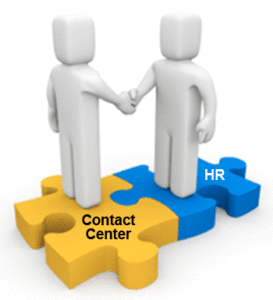 Both Human Resources and the Contact Center play a key role in optimizing the “talent acquisition” process. HR has broad responsibility and perspective to support enterprise-wide needs, and its pursuit of technology generally aligns with that charter. But the Contact Center often struggles to get value from HR’s enterprise-wide tools and services, or seeks its own resources.
Both Human Resources and the Contact Center play a key role in optimizing the “talent acquisition” process. HR has broad responsibility and perspective to support enterprise-wide needs, and its pursuit of technology generally aligns with that charter. But the Contact Center often struggles to get value from HR’s enterprise-wide tools and services, or seeks its own resources.
The market offers both enterprise tools and contact center-specific tools for recruiting, hiring, onboarding, and training. Enterprise HR tools are broadly known as “recruiting software” or “applicant tracking systems” (ATS), but the technology can go beyond these areas to include more of the end-to-end process from a requisition to onboarding, as well as reporting and analytics. Given the challenges of the center, training tools are also critical to get those new hires on a path to productivity.
| Tool | Enterprise | Contact Center |
| Analytics | Enterprise analytics tends to be more general and rely on analysts in other groups to bring focus to the contact center | Contact center analytics are specialized for the contact center
Niche tools identify top performers and their characteristics to create target hire profiles Contact center analytics are often part of a WFO suite Options include data, speech, text, and/or desktop analytics, along with scorecards and dashboards (often part of a “Performance Management” package) |
| Screening | HR may have online tools for screening and may target specific skills for the contact center | Contact center is interested in targeted screening in areas such as customer service experience or willingness to work specific schedules |
| Skills Assessment | HR may have online or in-house tools for skills assessment and may target specific skills for the contact center | Contact center skill interests include keyboarding, soft skills, language, problem-solving, etc. |
| Simulation | HR may have online or in-house tools for simulation and may help create specific simulations for the contact center | Contact center simulations should create virtual contacts to handle and demonstrate soft skills (in a variety of media) |
| Knowledge Management | The enterprise may have KM tools or an intranet with useful information for new hires | Contact center KM tools help a new hire find specific information quickly and easily, reducing the training burden and accelerating time to productivity |
| Online learning modules/ eLearning | HR may have online or in-house tools for eLearning and may target specific modules for the contact center
Often used for corporate compliance |
Contact center eLearning can be very specialized and integrated into the other WFO tools (e.g., coaching, performance management) |
| Learning Management System | An enterprise LMS is used to define and track required training (including security, compliance, harassment, diversity, etc.) | Contact center needs the LMS to be configurable to its specific training needs and ideally integrate with other WFO tools |
 The contact center needs to work with HR to apply enterprise tools to the center or justify its need for unique tools. Collaboration, discussion, assessment, and planning will help HR understand the center’s business needs. As part of this process, the contact center must convey the unique policy and practice needs of the center and how those can impact the tool requirements. Examples abound:specific skills qualifications, detailed attendance policies, tracking and evaluation, routine performance management, and unique schedules.
The contact center needs to work with HR to apply enterprise tools to the center or justify its need for unique tools. Collaboration, discussion, assessment, and planning will help HR understand the center’s business needs. As part of this process, the contact center must convey the unique policy and practice needs of the center and how those can impact the tool requirements. Examples abound:specific skills qualifications, detailed attendance policies, tracking and evaluation, routine performance management, and unique schedules.
Once on the same page, HR and the contact center can work together to address the pain points and improve the timeline and success rate – from position approval and posting to productive employee – through a combination of applying enterprise tools to contact center needs and securing center-specific tools where appropriate.
To learn more, download Reduce Early Turnover with the Latest Tools.
